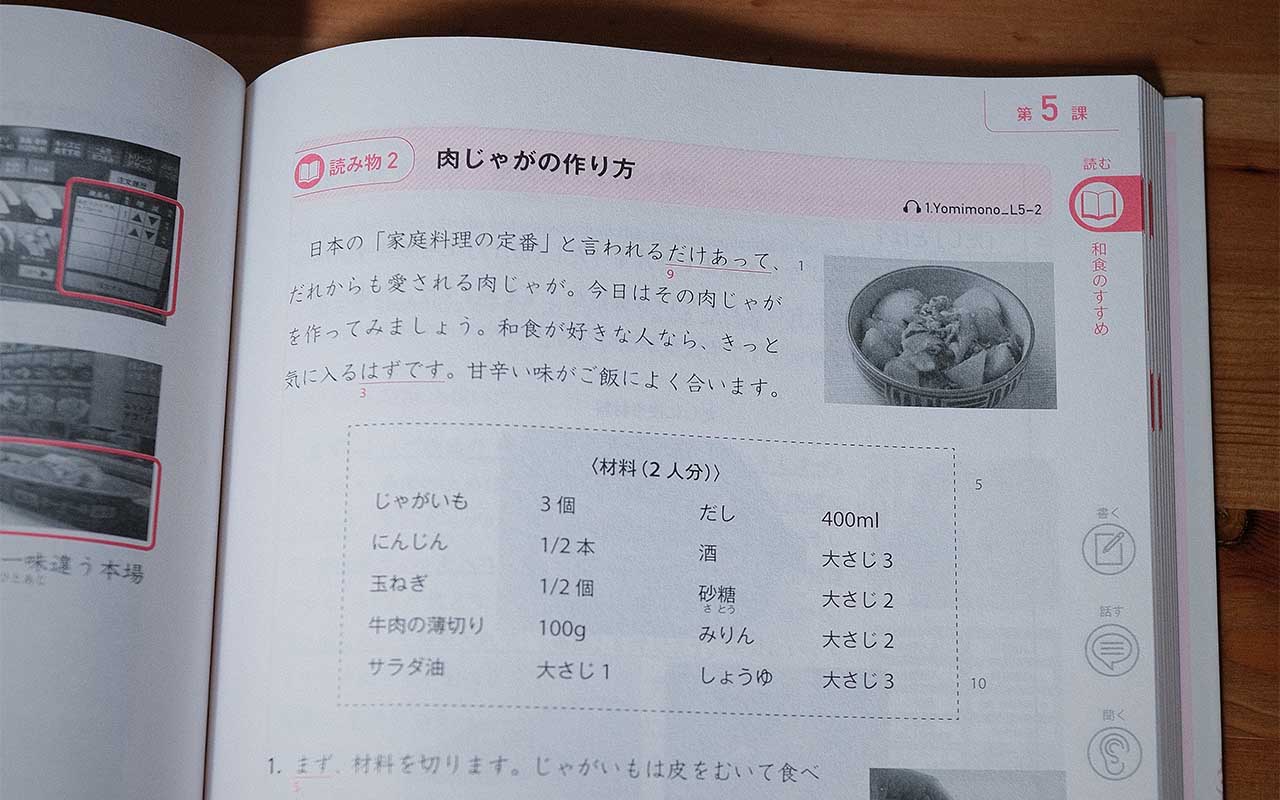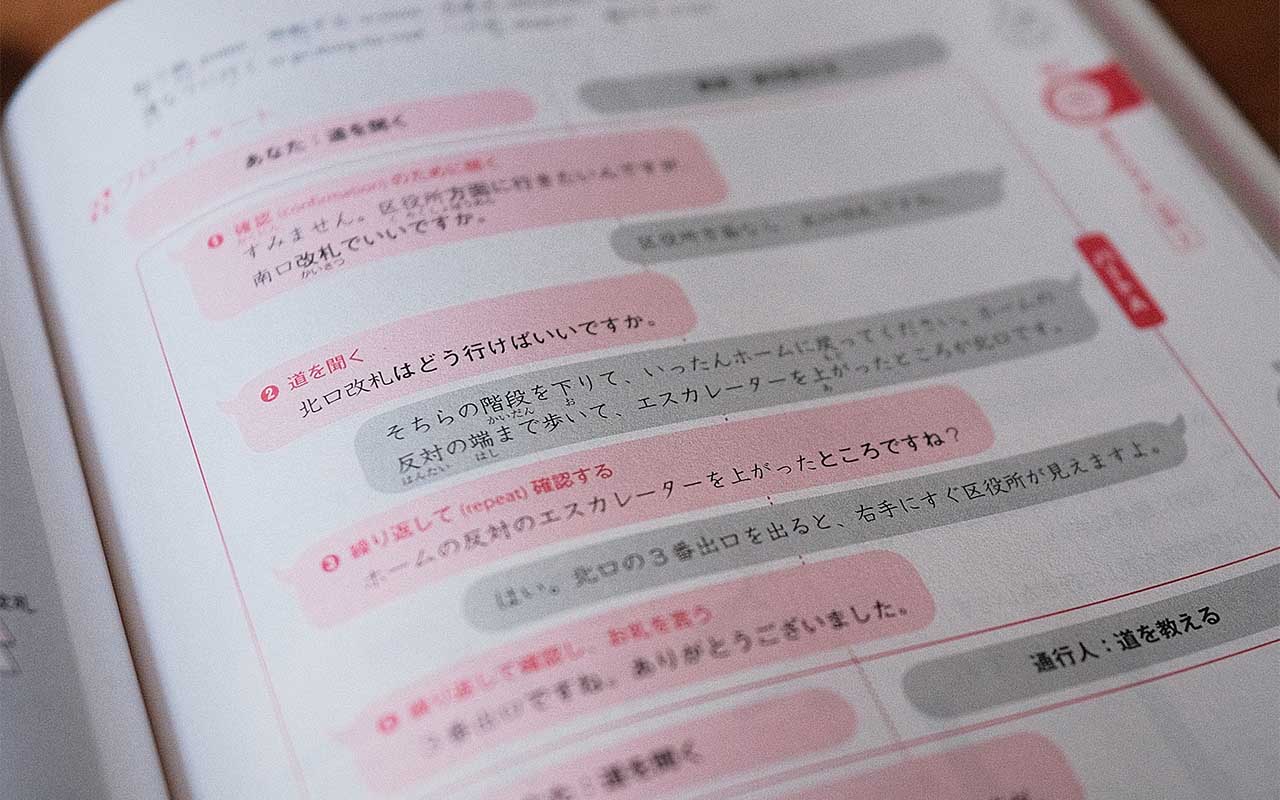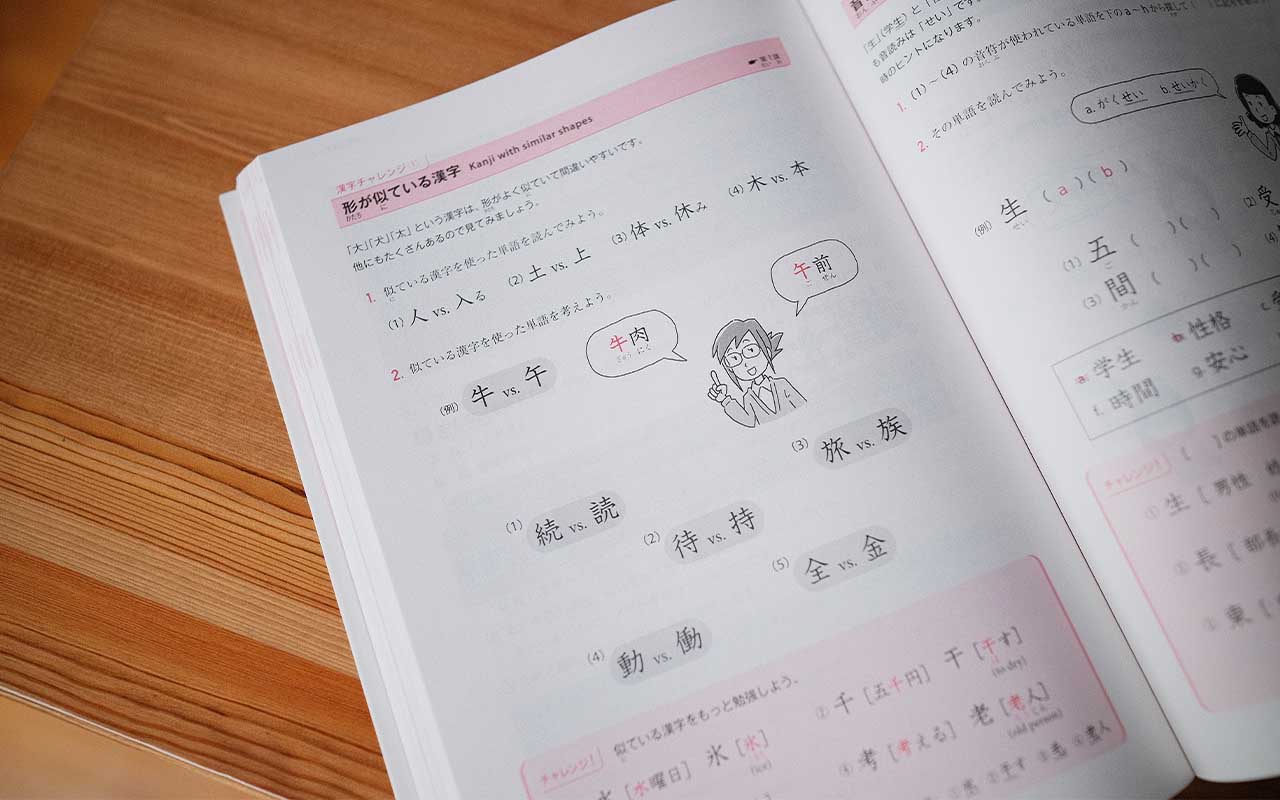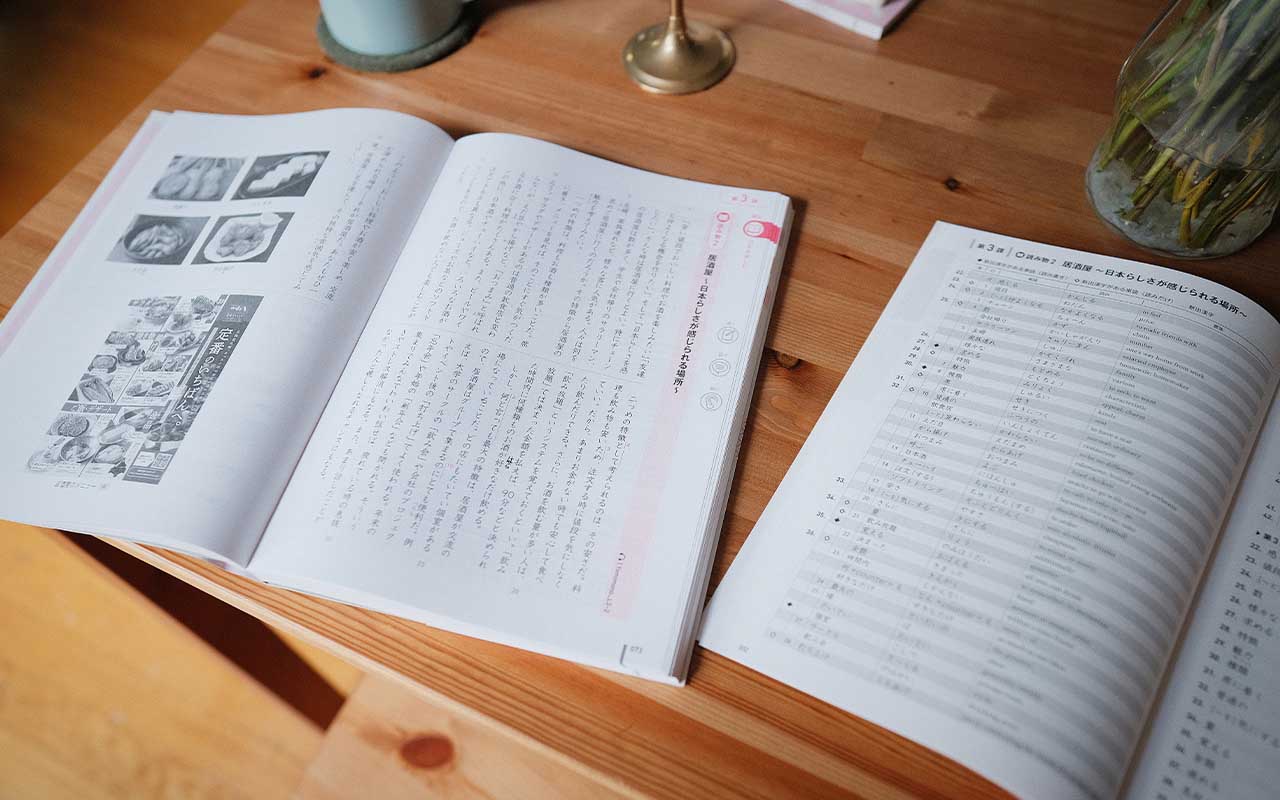Nowadays, there are a ton of resources available to learn Japanese, most of which are geared toward the beginner level — providing a platform for new learners to get their feet wet before they move on to more complex material. The most well-known of the beginner textbooks is probably Genki, a two-volume set published by The Japan Times initially in 1999, which we wrote a review of here. While this first stepping-stone now feels nearly ubiquitous, selecting a textbook to pick up where Genki leaves off can be a little more difficult.
This is where Quartet comes in. Like Genki, it's a two-volume set of Japanese textbooks published by The Japan Times, but unlike Genki I and II, Quartet is designed for intermediate learners. Previously, the most common recommendation for students after finishing Genki was to jump into Tobira: Gateway to Advanced Japanese Learning Through Content and Multimedia. However, many have noted the steep difficulty increase this presented, as that book is intended for advanced learners. The Japan Times also publishes An Integrated Approach to Intermediate Japanese, though it was last revised in 2008. In this way, Quartet could be seen as almost a spiritual successor to An Integrated Approach, providing students a smoother transition from the beginner level Genki series into intermediate study than what was previously offered.
As an intermediate Japanese learner who was looking for a smooth transition into more advanced resources after finishing Genki II, Quartet ended up being the perfect textbook series for me. If you're not quite sure where to turn after the Genki series, or if you were somehow convinced that Tobira would be the best next step, keep reading this article — you'll find out how Quartet helped me step up from the upper-beginner level and build a solid foundation to be able to enjoy a wide range of native content as an intermediate learner.
- Overview of Quartet Vol.1
- Reading Sections
- Writing Sections
- Speaking Sections
- Listening Sections
- "Brush Up" Section
- Supplemental Text
- Is Quartet a Stepping Stone to Success (as an Intermediate Learner)?
Overview of Quartet Vol.1
The structure of Quartet is simple: each lesson offers sections focusing on the four different language domains — listening, speaking, reading, and writing — in an attempt to provide a comprehensive resource to develop your practical language skills. Each volume consists of six lessons, which contain around ten grammar patterns, forty-five kanji, and a "reading strategy" or two. Volume One is designed for learners roughly around the N3 level (based on the five JLPT levels), and Volume Two is aimed at N2. I found much of the vocabulary used in Quartet vol.1 to correspond roughly to levels 25-35 in WaniKani.
The textbook also contains a removable "supplementary text" in the back, which lists the vocabulary and kanji used in each lesson. Audio is provided via an app called OTO Navi which can be downloaded onto either iOS or Android devices. Finally, there is a separate Workbook available for both volumes that focuses on writing practice, but includes expanded practice beyond the textbook in all four domains.
Unlike Genki, there's no central storyline similar to Mary's journey, and aside from occasional instructive diagrams, no illustrations (though there are occasionally images accompanying the reading or other sections). Each lesson leads with two readings, which vary in format and tone, followed by the writing section (which includes an example to guide your own work), a speaking section (which similarly offers a model conversation), and a listening section.
Through Quartet, I was able to engage with native material while still getting a helping hand with some new grammar and vocabulary.
As you might be able to tell by this expansive aim, Quartet is really best suited for studying in either a classroom setting, with a teacher, or in a study group. Of course, you'd need someone to help check your writing and to converse with, but that's not to say that Quartet has nothing to offer self-learners. I take lessons weekly with a teacher where we do conversation and writing practice, so I focused my time on the reading sections. In this way, I felt Quartet served as almost a soft introduction into the popular immersion-style learning, where learners study primarily through consistent exposure to native content in their target language. Through Quartet, I was able to engage with native material while still getting a helping hand with some new grammar and vocabulary.
Reading Sections

The reading sections lead each lesson, and serve as sort of a backbone for the content. These readings aren't model conversations like in Genki. Instead, Quartet offers texts in a range of different styles and formats in an attempt to best prepare learners for more native material. Each section is preceded by a set of questions: two for before reading to help acclimate to the topic, and two to return to after reading — which can be discussed with a teacher or class, or simply considered on your own. Afterwards, Quartet breaks down some of the techniques employed in the writing, such as noun modification or expressing requests and thanks, as well as roughly 10 grammar structures found in the readings.
These sections are a lot of fun, and their diversity is a big plus. Quartet does a good job of preparing you to read a wide range of materials — not simply polite model conversations, but essays, brochures and the like. Below the texts, some vocabulary is highlighted and defined, and furigana is used when applicable.
Here's a list of the different text styles in Quartet:
| Lesson One | An essay on director Hayao Miyazaki, and another on Nobel Prize-Winner Dr. Shinya Yamanaka |
| Lesson Two | An email to a professor, and a letter of thanks |
| Lesson Three | A brochure on climbing Mount Fuji, and an article describing izakaya |
| Lesson Four | A conversation between exchange students, and a piece written describing employment as a waiter |
| Lesson Five | An article describing and offering tips about a conveyor-belt sushi restaurant, and a recipe for nikujaga |
| Lesson Six | An opinion essay about packaging and its widespread use in Japanese culture, and another offering competing viewpoints on the merits and disadvantages of early English study for Japanese students |
Through this range of different sources and voices, Quartet not only has readings that may interest many different learners, but also exposes you to styles of writing you may not usually come across in your language journey. I think this sets a learner up well for building their confidence, and preparing them to dive into other native texts they may find interesting in the future.
Similar to Genki, there's a heavy emphasis placed on grammar in Quartet. Following the reading section, there are usually about ten different grammar points that appear in the text explained in more detail. The explanations are often fairly slim, but do a good job of not only conveying how the grammar structure was employed in the text, but other uses for it. This is done through the usage of multiple example sentences, all of which help to build a thorough understanding of the point discussed. Additionally, these explanations are some of the only places in the textbook where English is used.
One small quibble I have with the grammar sections is that they tend to focus just as heavily on expressions or turns of phrase as they do on more conventional grammar structures, but this is due in large part to the intermediate nature of the resource. Nevertheless, these expressions are also important to learn, and explained thoroughly.
Quartet also does a great job of building on grammar points introduced in previous lessons, as well as offering common pairings, common mistakes, or similar structures and explaining the nuance behind them. In the workbooks, there are questions to test your comprehension of the readings.
Writing Sections
Next are the writing sections. These build on the texts presented in the reading sections for some nice continuity. For example, given the first section's focus on famous Japanese people, the first writing section offers a model essay on the baseball player Suzuki Ichiro.
These sections are the shortest in the book, as they rely heavily on doing your own work and having it checked by a teacher or native speaker. This is part of the reason Quartet is not best suited for learners studying on their own, but I still found these sections to be valuable. For example, there’s a section on the culture and etiquette in writing a letter in Japanese, which I then used some of the strategies taught to send a postcard to my Japanese teacher, who was very appreciative.
After providing a model to help understand the style of writing that you're expected to practice, Quartet briefly breaks down some of the strategies the writing is employing, before reminding you of the grammar structures you could employ in your own work. It then poses a question and a suggested word count. These prompts are broad enough that a range of formats would be acceptable, but provide just enough of a foundation to help focus.
In the accompanying workbook there are more focused exercises based on writing which will be familiar to learners coming from the Genki series.
Speaking Sections

The speaking sections of Quartet are a little longer than the writing sections. Here, Quartet offers a series of questions and prompts for learners to act out with their classmates or a teacher. Additionally, there are some vocabulary or grammar points Quartet calls attention to with a brief explanation and some example sentences, but unlike in the reading sections, these explanations are all in Japanese.
Like the writing sections, the speaking sections are really all about the work you put into them, and the environment in which you're using Quartet. I used these sections as a framework for practice conversations with my private teacher, and I also chat regularly with native Japanese-speaking friends, and for that, I found them very helpful.
Additionally, these sections contain one or two different model conversations between various characters. I think this component will be most familiar to students who have worked through the Genki series, as it closely resembles the opening dialogues of each Genki lesson.
However, unlike Genki, Quartet’s speaking sections go even further in breaking down the conversations, beyond just the grammar points used. They highlight the flow of the conversation, and call attention to some of the more important points of vocabulary the characters use. On the page following the dialogue, the dialogue is broken down into speech bubbles for each character, and further categorized into parts based on the flow of the conversation. Quartet also adds some descriptors above these bubbles to highlight the intention behind the words used. I think this is a really nice addition, building off of what was the main section in Genki.
Listening Sections
The listening sections also tend to be fairly brief, but the focus is less on the guidance Quartet provides, and more so on offering comprehensible audio to learners. Unlike many textbooks where audio is provided via CD (who even has a CD player anymore?…), in Quartet the audio is distributed via an app called "OTO Navi" ("oto" meaning "sound" in Japanese).
The app is a bit clumsy, but it's not too difficult to navigate, and provides helpful tools such as being able to change the speed of the audio played, loop audio, and go back a few seconds to double-check your comprehension. The audio is clear, and I was surprised at how well it held up while being slowed for easiest understanding. However, the dialogues covered definitely sound like scripts, and a transcript is provided in the appendix of each book.
The rest of the section provides questions to answer based on the audio, so you can test how well you understood. The audio varies like the texts provided in the reading sections, but it feels more "produced" than the texts.
It's certainly a plus to know the audio you're listening to should match your current skill level, but it's a little stilted. I think I'd recommend just listening to YouTube videos, material designed for native speakers (even kids!), or one of the numerous podcasts for Japanese learners that exist.
"Brush Up" Section

Following the six lessons in the book, there's a section called "Brush Up." This is a review section, covering grammar, kanji, and vocabulary you should know up to this point. This section is a real highlight of the book, as it helps lock in the knowledge you've accumulated and offers a way to help address any blind spots or points of study that might have slipped through the cracks.
I found this section to be extremely helpful, especially in how it conveys information. It covers a lot of common mistakes for learners, such as the difference between あげる, くれる, and もらう, or passive/causative/causative-passive. The kanji-focused section is similarly well done, covering homonyms, similar looking kanji, and other common mistakes.
Overall, this section provides a great way to ensure you've attained the information you need before moving on, and as a reference section for common mistakes or lingering difficulties. Additionally, it helps students and educators distill down some of the most important study points even further. I wish more textbooks had something like this!
Supplemental Text
Beyond the "Brush Up" section, there's the supplemental text. This is a coral pink booklet, roughly sixty pages long, that separates from the back of the textbook. This way, you can have the supplemental text open next to you while you work through the lessons.
The supplemental text contains a chart with vocabulary, their reading, and a definition, from the reading sections of each lesson. This is a super handy way to look up any words you might not know without having to use your phone, a computer, or a secondary dictionary. It also provides example sentences for the vocabulary. This is not only a really nice resource to accompany the texts, but is additionally a great place to find words and sentences to input into an SRS program, or for students studying for exams in a traditional classroom setting.
The kanji section is similarly detailed, with stroke number and order, readings, and definitions, even if they differ from how a kanji is used in the text.
Is Quartet a Stepping Stone to Success (as an Intermediate Learner)?

Overall, I found the Quartet series to be a really nice stepping stone after Genki, with volume I being an easier transition into intermediate-level material than Tobira. There's very little hand-holding here like you might be used to if you’re coming from Genki, as the book is almost entirely in Japanese aside from the grammar explanations, similar to Tobira. But once you get acclimated to this, it becomes one of the primary strengths of the book, allowing a learner to practice their comprehension skills in a natural manner across all four domains.
While the bulk of the content is dedicated to the reading sections, it's not hard to see how well the comprehensive approach would work in a classroom or study group setting. While not all of the content in Quartet is created equal, the approach works, giving a motivated student in the right environment all they'd need to take their Japanese to the next level. But if your studying is entirely self-led, perhaps you should look elsewhere.
For my part, I really enjoyed working through the reading sections specifically, and learning new words and grammar through context. The speaking, listening, and writing sections also provided a nice framework to help ground my study and keep it consistent.
Most of all, I felt Quartet helped me upgrade my abilities not only from upper-beginner to an intermediate level, but also upgrade my studying practices to engage with more native material. I have since delved more into native books, games, and videos, and have been able to have more complex and nuanced conversations with my teacher and friends. Quartet can help you develop the tools to consume a broader range of media, and offers strategies to learn things you come across in native material you haven’t seen in your studies previously.
Ian’s Review
Quartet is a great resource for upper-beginner learners looking to take the next step. While the comprehensive approach it’s recommending would be most effective in a classroom setting, I found Quartet to be a great resource, especially for easing into interacting with more native-level material.
